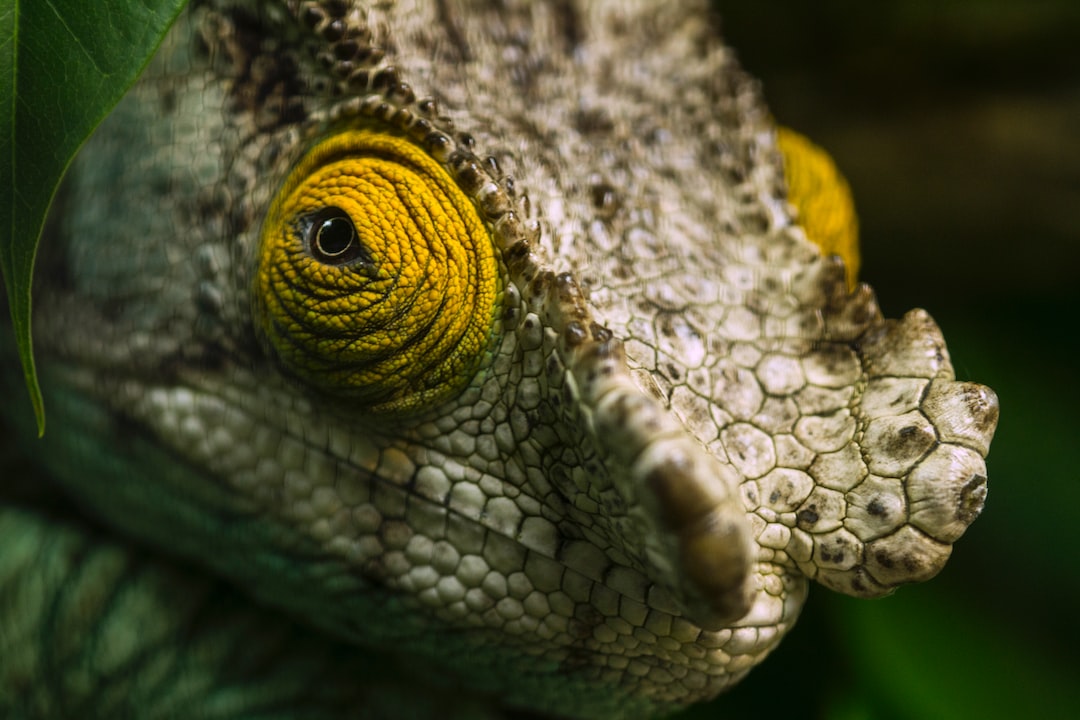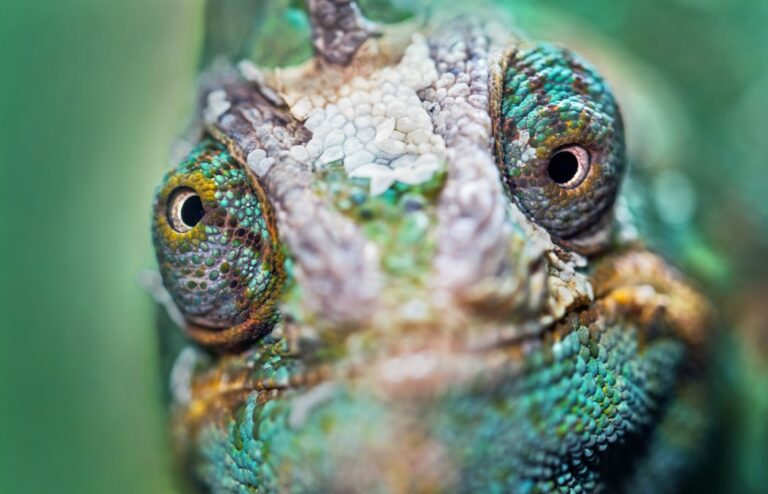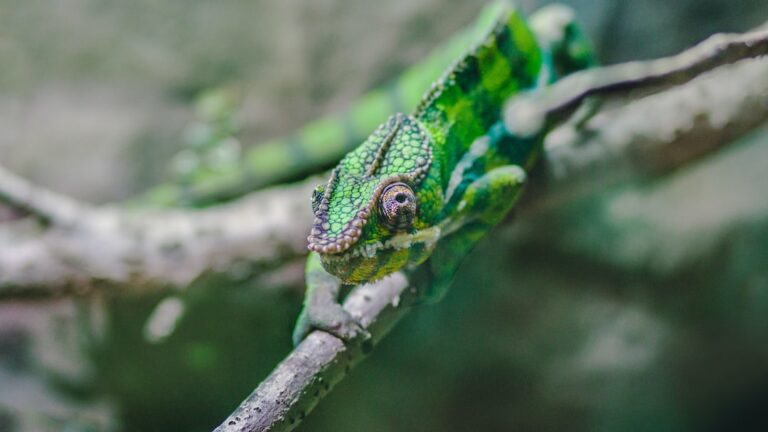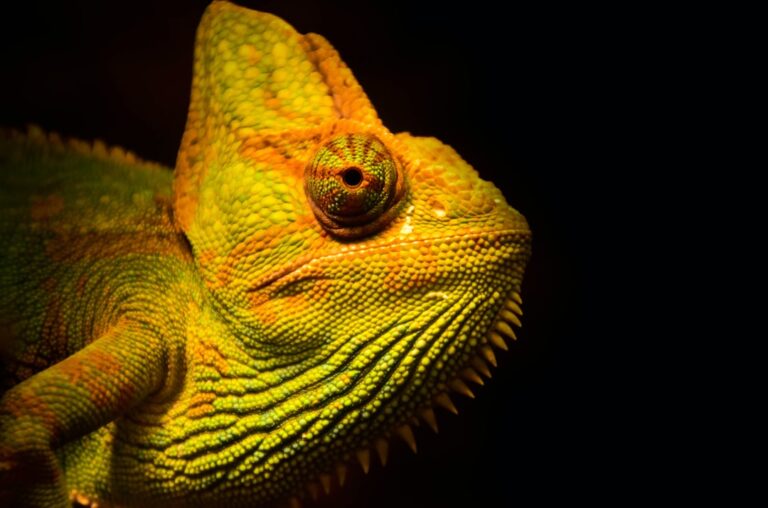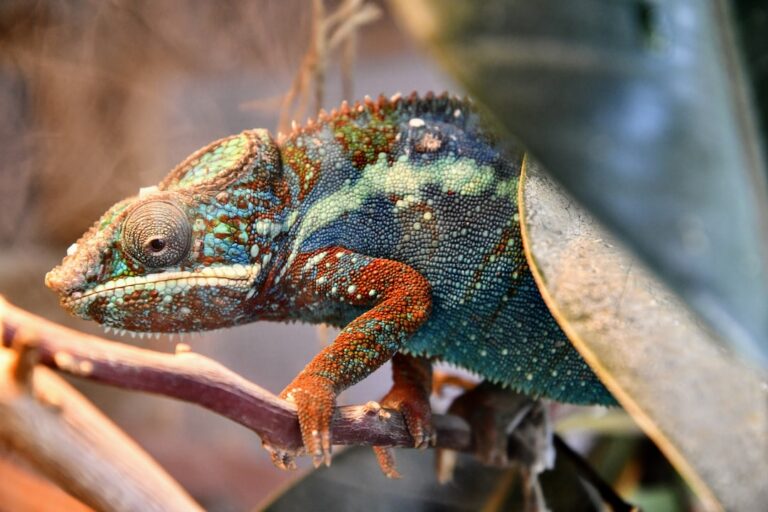Why Do Chameleons Hang Upside Down?
Chameleons are fascinating creatures known for their unique ability to change color and blend into their surroundings. However, their behavior goes beyond just camouflage. One of the most intriguing behaviors exhibited by chameleons is their tendency to hang upside down. This behavior is not only visually captivating but also serves several important purposes for these reptiles. In this article, we will explore the anatomy of chameleons and how it enables them to hang upside down. We will also delve into the benefits of this behavior, the role of gravity in chameleon behavior, and the various ways in which chameleons use their prehensile tails to hang.
Table of Contents
The Anatomy of a Chameleon: Understanding Their Limbs and Feet
Chameleons have unique limbs and feet that are specifically adapted for their arboreal lifestyle. Their limbs are long and slender, allowing them to navigate through trees and branches with ease. The feet of chameleons are zygodactyl, meaning they have two toes pointing forward and two toes pointing backward. This arrangement gives them a strong grip on branches and allows them to cling to surfaces.
The feet of chameleons also have specialized pads called tubercles that provide additional grip. These tubercles are covered in tiny scales that create a rough texture, enhancing the chameleon’s ability to cling to surfaces. The combination of their long limbs, zygodactyl feet, and tubercles make chameleons highly adept climbers.
The Benefits of Hanging Upside Down for Chameleons
One of the most intriguing behaviors exhibited by chameleons is their tendency to hang upside down. This behavior serves several important purposes for these reptiles. Firstly, hanging upside down allows chameleons to conserve energy. By hanging motionless from a branch, they can rest while still maintaining a secure position. This is especially beneficial during periods of low activity, such as when they are digesting food or waiting for prey.
Hanging upside down also helps chameleons avoid predators. Many predators, such as snakes and birds, primarily search for prey on the ground or in a horizontal position. By hanging upside down, chameleons are less likely to be detected by these predators. Additionally, their ability to change color and blend into their surroundings further enhances their camouflage and protection.
The Role of Gravity in Chameleon Behavior
Gravity plays a significant role in chameleon behavior, particularly when it comes to their ability to hang upside down. Chameleons have a strong grip thanks to their zygodactyl feet and tubercles, which allows them to cling to branches even when they are upside down. Gravity helps to keep them in place and prevents them from falling.
Furthermore, gravity also affects the way chameleons move. When climbing or walking on horizontal surfaces, chameleons use a unique gait known as the “rocking horse” gait. This gait involves moving both legs on one side of the body forward at the same time, followed by the legs on the other side. This rocking motion helps them maintain balance and stability while navigating through their arboreal habitat.
How Chameleons Use Their Prehensile Tails to Hang
Chameleons have prehensile tails, meaning they can grasp and hold onto objects. This adaptation is particularly useful for hanging upside down. When a chameleon hangs, it uses its tail to wrap around a branch or other support structure. The tail acts as an additional anchor point, providing stability and allowing the chameleon to maintain its position.
Different species of chameleons have varying degrees of tail prehensility. Some species have highly prehensile tails that can tightly grip branches, while others have less prehensile tails that are used more for balance than for hanging. The tail adaptations of chameleons are a result of their specific habitat and lifestyle.
The Importance of Camouflage and Protection for Chameleons
Camouflage and protection are crucial for chameleons to survive in their natural habitats. These reptiles are often preyed upon by birds, snakes, and other predators. By hanging upside down, chameleons can take advantage of their ability to change color and blend into their surroundings.
When hanging, chameleons can adjust their body coloration to match the branch or surface they are clinging to. This allows them to remain hidden from predators and increases their chances of survival. Additionally, hanging upside down also provides chameleons with a better vantage point to spot potential threats and escape if necessary.
The Relationship Between Hanging Upside Down and Sleeping
Chameleons have unique sleeping habits, and they often choose to hang upside down while sleeping. This behavior serves several purposes. Firstly, hanging upside down allows chameleons to conserve energy while they sleep. By remaining in a secure position, they can rest without expending unnecessary energy.
Hanging upside down also provides chameleons with protection while they sleep. By being elevated off the ground, they are less likely to be detected by predators. Additionally, their ability to change color and blend into their surroundings further enhances their camouflage and protection during sleep.
The Different Types of Chameleons and Their Hanging Behaviors
There are over 200 species of chameleons, each with its own unique characteristics and behaviors. While many chameleon species exhibit hanging behavior, the extent to which they hang varies among species. Some species, such as the Veiled Chameleon (Chamaeleo calyptratus), are known for their frequent hanging behavior. They often hang upside down from branches, using their prehensile tails to maintain their position.
Other species, such as the Panther Chameleon (Furcifer pardalis), are less inclined to hang upside down. They prefer to perch on branches in a more horizontal position. However, they still have the ability to hang if necessary, using their prehensile tails and zygodactyl feet to do so.
The Connection Between Chameleon Habitat and Hanging Behavior
Chameleon habitat plays a significant role in their hanging behavior. Chameleons are primarily found in tropical and subtropical regions, where they inhabit a variety of environments such as rainforests, savannas, and deserts. The specific habitat of a chameleon can influence its hanging behavior.
For example, chameleons that live in dense rainforests with an abundance of trees and vegetation are more likely to exhibit frequent hanging behavior. The dense foliage provides ample opportunities for them to hang upside down and blend into their surroundings. On the other hand, chameleons that inhabit more open habitats, such as savannas or deserts, may have less need for hanging behavior and may rely more on perching or basking in a horizontal position.
The Fascinating Evolutionary History of Chameleons and Their Hanging Adaptations
Chameleons have a long evolutionary history that dates back millions of years. Fossil evidence suggests that chameleons have been around for at least 65 million years. Over this time, they have evolved various adaptations that enable them to thrive in their arboreal habitats.
The ability to hang upside down is believed to have evolved as a response to the challenges of living in trees. By hanging, chameleons can take advantage of their unique limb and foot anatomy to navigate through branches and avoid predators. The development of prehensile tails further enhanced their ability to hang and provided additional stability.
In conclusion, the hanging behavior exhibited by chameleons is a fascinating adaptation that serves several important purposes. Their unique limb and foot anatomy, along with their prehensile tails, enable them to hang upside down and navigate through their arboreal habitats with ease. Hanging upside down allows chameleons to conserve energy, avoid predators, and take advantage of their ability to change color and blend into their surroundings.
The relationship between chameleon habitat and hanging behavior further highlights the importance of this behavior in their survival. Different species of chameleons exhibit varying degrees of hanging behavior, depending on their specific habitat and lifestyle. The evolutionary history of chameleons has shaped their hanging adaptations over millions of years, allowing them to thrive in their unique arboreal environments.
Overall, the hanging behavior of chameleons is a testament to the incredible adaptability and ingenuity of these reptiles. Their ability to hang upside down is just one of the many fascinating aspects of their behavior that continues to captivate researchers and nature enthusiasts alike.
If you’re curious about the sleeping habits of chameleons, you might also be interested in learning whether chameleons are deep sleepers. According to a fascinating article on Reptile Friend, chameleons do indeed experience deep sleep. To find out more about this intriguing aspect of chameleon behavior, check out the article “Are Chameleons Deep Sleepers?”

